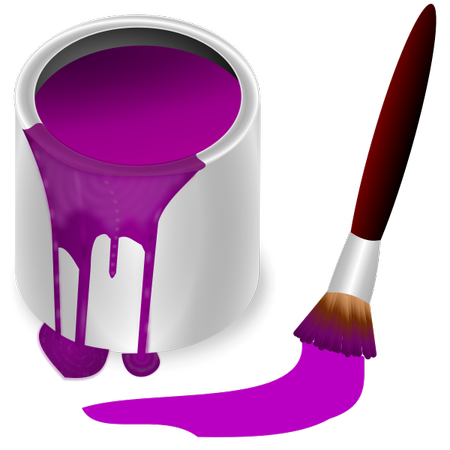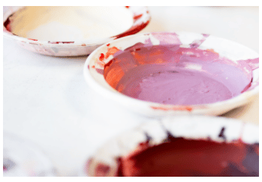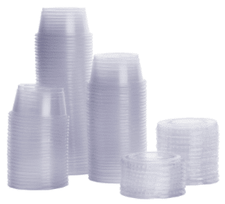Purple is an amazing color to be used in your paintings. Making purple might appear like a tough job initially, but it will become easier with practice.
What Colors Make Purple?

Have you ever wondered what color makes purple? It’s made by mixing red and blue colors. However, it’s not like you mix these colors, and you’ll get purple. There’s more to the story.
To learn how the purple color is made, you should know the science behind color blending. Today’s blog will discuss some important points about making purple. Here’s what we’ll cover:
- History of purple
- What makes the color purple?
- How to make different tones of purple?
So without making you wait any longer, let’s jump to our first topic.
History of Purple
An amalgamation of cultural and historical relevance is steeped in every color. Many artists believe that knowing this history can give life to your art.
Colors have been a crucial part of humankind’s history for a long time – more specifically when the first time humans turned berries into pigments.
Let’s understand the history of purple in detail, starting with its invention!
Tyrian Purple – The First-Ever Shade of Purple
The purple color was first seen during the Neolithic period. Many Neolithic archeological sites contain paintings made with sticks of manganese and hematite powder.
In most of those art pieces, Tyrian purple was used. Tyrian purple is basically a purple dye produced from snails.
At that time, the process of creating Tyrian purple dye was incredibly expensive and laborious. If anyone wore purple robes in ancient Greece, they were only the royals and wealthy.
And being used only by royals, this color became associated with magistrates, nobles, priests throughout history. When it comes to the history of purple, China also has a huge and essential part in it.
Purple in China
Other than Greece, Purple was seen in Chinese history, too. However, the story is a little different from other civilizations that discovered it.
Purple wasn’t exported to China; they independently found it. It was in the form of the dye.
The ancient Chinese, instead of using small snails, used purple-colored flowers to produce the purple dye. The die was then used to adhere clothes, making the pigment more expensive.
The ruler of the QI state also loved purple. As a result, the purple dye became more popular, and its price soared.
There’s an important fact about how ancient Chinese relate to colors. They used to rank colors based on their importance and propriety.
The most valued colors were the primary ones. And surprisingly, purple wasn’t as favorable as crimson. But by the sixth century, the popularity of purple rose dramatically high and overlooked crimson.
What Colors Make Purple?
Purple color is made by mixing red and blue together. The amount of red and blue color you use determines which shade of purple you will get after blending.
If you add redder, you will get a redder purple. On the other hand, adding more blue creates bluer purple.
Red and blue are two primary colors that are necessary to create purple. But it’s not like you cannot create other shades of purple without these two. When added yellow or white to the blend of red and blue, it will create a lighter shade of purple.
Similarly, incorporating darker shades like black or grey into the mix of red and blue gives a darker shade of purple.
However, getting the purple colors isn’t a challenging task. What’s complex is getting the desired shade of purple. Here’s how you do that.
6 Recipes for Mixing Purple
Some artists have trouble mixing purple from red and blue. Purple is easy to mix if you use magenta instead of red. Below are my 6 recipes for mixing purple. I mix these purples with acrylics but the formulas will also work with oils, gouache, and watercolor.
1 Phthalo Blue and Quinacridone Magenta


This is my favorite recipe for mixing purple. It creates a vivid purple from the colors that I already have on my palette. If you’re interested in using a limited palette, you’ll want to read my post The 7 Color You Need to Start Painting in Acrylics.

Begin with a pile of Phthalo Blue and gradually start mixing in small amounts of Quinacridone Magenta. At first, it will become a dark blue that’s a close approximation of Ultramarine Blue. Continue adding Quinacridone Magenta until it turns the shade of purple that you prefer.
The resulting purple is a dark and transparent color. If you apply it in thick layers it will look very dark. You can see this in the right side of the photo at the top of the post. It’s so dark it’s almost black.
Since both Phthalo Blue and Quinacridone Magenta are transparent, the purple will also be transparent. Apply it in thin layers to create a vibrant purple. As I describe in my post How to Make Acrylics More Vibrant, working in transparent glazes is one way to achieve vibrant colors in your paintings. It’s the transparent colors that give watercolor painting their vibrancy.
Another option is to add white to make a light purple, although it will look less saturated. In general, adding white to colors will give them a “chalky” appearance. This may be what you’re looking for if you want to use “pastel colors” in your painting.

While this is my favorite recipe for making purple, there are plenty of other options below. These may be useful if you have other blues that you want to mix purple from, or if you want to learn how to mix a variety of purples.
2 Ultramarine Blue and Quinacridone Magenta

This will create a purple that’s very similar to on you can make with Phthalo Blue and Quinacridone Magenta. One difference is the Ultramarine Blue is already biased towards magenta, so you don’t have to add as much of the magenta.
Also, Phthalo Blue has a slight bias towards green, so the Ultramarine Blue may be better suited for mixing purple. That’s because green contains yellow, and adding yellow to purple will make it duller.
3 Alizarin Crimson and Ultramarine Blue

You can use Alizarin Crimson to mix purple, but since it’s a warm red it will dull the purple substantially. Above is a mixture of Alizarin Crimson and Ultramarine Blue. The result is a dark and muted purple.

This may be what you’re looking for. Aside from flowers, very vibrant purple doesn’t occur very often in natural settings. The purple colors you’ll find in paintings with natural colors are often less saturated.
I prefer Quinacridone Magenta over Alizarin Crimson. As I describe later in this article, magenta is a primary color. You can mix a greater range of colors from it than you can with Alizarin Crimson.
Step by Step Guide to Mixing Purple Acrylic Paint
Step 1: Prepare Your Work Area
Before you start, prepare your work area by covering any surfaces that you don’t want to accidentally get paint on. Although mixing paint isn’t usually a messy affair, there’s always the chance that you’ll accidentally drop your palette knife, and it’s much easier to clean up a protected surface than a cloth table covering!
At this time, you should also make sure that your palette knife, test surface, paintbrush, mixing surface, paint and perhaps paper towels are all readily available for you to grab at a moment’s notice.
Step 2: Distribute Paint
After you’ve set up your work area, squeeze out your desired colors onto your mixing surface. Leave at least two inches between your paint piles to avoid them mixing inadvertently if they run a little bit.
If you’re using black or white, you can add those to your palette too!
Step 3: Mix, Mix, Mix
You’ve got your paints on your mixing surface and your palette knife ready to rock – let’s get mixing!

To begin, take equal parts of red and blue (or cyan and magenta) from your paint piles using your palette knife, using a paper towel or an old rag to clean the palette knife between colors. Mix the red and blue using a press and scoop motion, pulling any errant red or blue that slips away back into the mixture. This is not, and should not be, a quick process! Take your time and mix your colors until you can no longer differentiate between the red and blue in your mixture.
Step 4: Add More Color
After you’ve properly incorporated your red and blue into a beautiful purple, you can start adding more red or blue, or add some white or black if desired.
Do this a little bit at a time! You can always add more, but you can’t take the paint out once it’s mixed in.
During this step, have your paintbrush and test surface close by. That way, you can test your color frequently to see if you need to add a bit more.
Using and Storing Unused Paint

Now that you’ve created your dream purple, it’s time to use it! You can use your mixed acrylic paint in exactly the same way you’d use your pre-mixed paint; mix it with the medium of your choice, and away you go!
When you finish your piece and if you have some leftover purple that hasn’t been mixed with medium, you can store it just like your premixed paints. Depending on the amount you mixed, sample cups with lids work perfectly for storage (and make your paint color easy to see).

Final Thoughts
Mixing your own paint is a satisfying thing. Fluid artists already have an appreciation for the way that colors interact with one another, so mixing your own paint should be a lot of fun! Even though it takes more advanced preparation than just unscrewing a cap and mixing your paint with a medium, it’s totally worth it to get those one-of-a-kind pieces.
A final tip for you: make sure that you write down your color ratios after you’ve finished so you can remember how to mix your favorite purple in the future!
Do you mix your own paint? We’d love to see your custom color creations in our Facebook Group!





